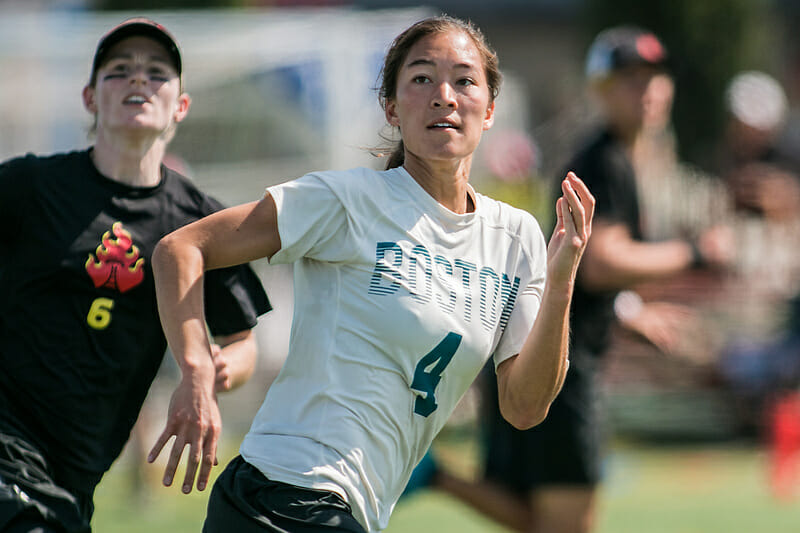Cutting is about recognizing dangerous spaces on the field and attacking them at 100% effort at the key time.
February 21, 2018 by Ariel Jackson in Analysis, Opinion with 0 comments

You might have heard that great throwers don’t pivot. I disagree, but really only in semantics. Great throwers do pivot, they just don’t fake.
You won’t often see a great thrower pretend to throw when they have no intention of actually making that throw.1 Great throwers start a throwing motion with every intention to release the disc, and then sometimes they do and sometimes they don’t. Great throwers don’t move the disc towards one space in order to “set up” or “move their mark.” That tactic does work, but it only works against newer players and those who haven’t learned how to prioritize threats when marking. These fakes become a habit that finds early success in a player’s career that must then be unlearned in order to progress to a higher level.
As Idris Nolan, co-coach of Fury, recently said, “In general, the proliferation of ‘stuff that works against bad ultimate players’ is an issue in frisbee.” I could not agree more.
Just as great throwers don’t often initiate a throw that they have no intention of throwing, great cutters don’t often initiate a cut that they don’t expect to get thrown to.
Pumpfakes to communicate with receivers being one major exception. ↩
Notes From A Contrarian Coach: Great Cutters Don’t Fake is only available to Ultiworld Subscribers
Already have a subscription? Log in
Whether you visit Ultiworld for our reporting, our podcasts, or our video coverage, you can help us continue to provide high quality content with a subscription. By becoming a subscriber, not only do you receive benefits like exclusive articles and full article RSS feeds, you also help fund all of Ultiworld's coverage in general. We appreciate your support!